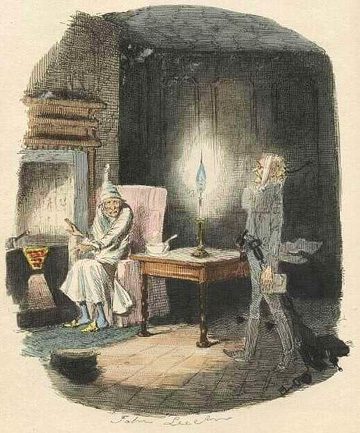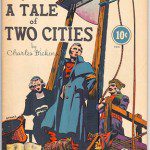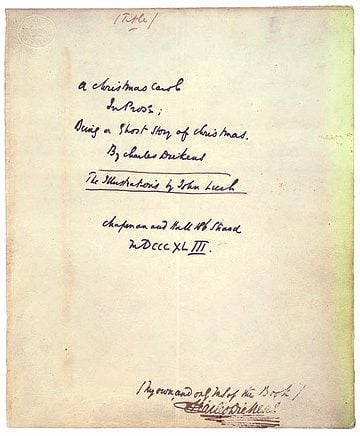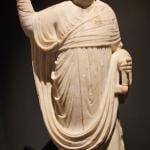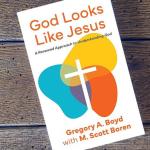Christmas According to Dickens
Our Favorite Christmas Carol?
If you were to ask people “What is your favorite Christmas carol?” you’d get a wide variety of answers. Many would offer up “Silent Night” or “Joy to the World.” Folks who count all Christmas songs as carols might mention “Winter Wonderland” or “The Christmas Song” (Chestnuts roasting . . .). In fact, these two were the most popular holiday songs in the last decade, according to ASCAP.
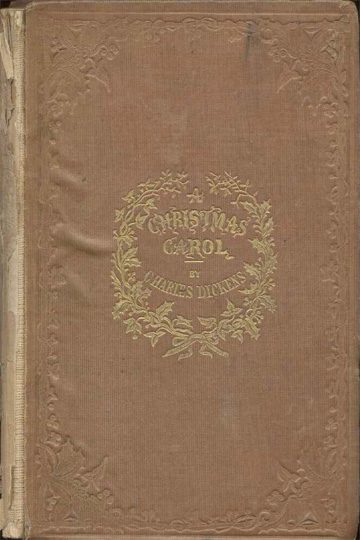
But when I refer to “our favorite Christmas carol,” I’m actually thinking of a different genre altogether. I want to talk about, not holiday hymns and songs, but a book known as A Christmas Carol. Of course, I’m speaking of the holiday classic by Charles Dickens. If you were to add up the sum total of human love for this book, it might just be the most beloved of all Christmas carols. It is surely the most popular of all Christmas stories, save for the one that is found in the pages of the New Testament.
A Christmas Carol Many Times Over
I have read A Christmas Carol probably ten times, ever since I began doing so as a yearly holiday tradition. I have listened to a recorded version of the book about three times. I have watched cinematic renditions of the story at least ten times, ranging from the sublime 1951 version starring Alastair Sim to the ridiculous Mr. Magoo’s Christmas Carol from 1962. Moreover, I have seen live dramatic presentations of this story at least a dozen times, including the Christianized version that was presented every year at the church where I grew up, as well as the always outstanding performance at the Glendale Centre Theatre (which is still offering its winsome drama, now in its 47th year). In fact, last year I played the role of Marley’s ghost in a shortened dramatic version of A Christmas Carol at my work Christmas party. I hope there was more of grave than gravy in me.
When you add up the numbers, I have read or watched or listened to A Christmas Carol at least thirty five times, and counting. No other work of fiction even comes close to this number in my whole life experience, except, perhaps, for reading Goodnight Moon to my children when they were young. Yet, even after thirty-five exposures, I still love A Christmas Carol. Indeed, I may very well appreciate it more now than ever.
Why Is A Christmas Carol So Beloved?
Well, there are several obvious features of A Christmas Carol that augment its easy likability. First of all, it is short. You can read it in less than two hours. When Dickens himself used to do public, oral readings of the book (as he often did), he’d take only three hours or so. In truth, A Christmas Carol really isn’t a novel. It’s more of a novella, or, as Dickens himself labels it, “Ghost Story of Christmas.”
Second, A Christmas Carol is about Christmas, obviously enough. This is a popular subject, even in today’s increasingly secular world. It’s hard to imagine that An Epiphany Carol or even A New Year’s Eve Carol would capture our imaginations as much as A Christmas Carol. Yet, Dickens wrote four other Christmas books that are rarely read. This fact suggests that A Christmas Carol’s popularity has to do with more than just its happy theme.
Third, A Christmas Carol features the literary elements that make Dickens such a delightful author. It’s filled with mouthwatering descriptions of luscious food and drink. It has lots of suspense and lots of humor. The characters are truly memorable, even ones that have very few lines. Who doesn’t remember Tiny Tim and his iconic “God bless us, everyone!”? And, of course, A Christmas Carol is a salient example of Dickens’ inimitable narrative style, a kind of “I’m-your-friend” storytelling that draws the reader into the tale and features utterly enjoyable, ironic, lush descriptions.
All of this contributes to the popularity of A Christmas Carol, to be sure. But none of what I’ve suggested accounts for the unprecedented popularity of Dickens’ little story. This, I believe, results from the narrative core of the story, the changed soul of Ebenezer Scrooge. Above all, we delight in watching an ice-cold, stony heart become warm and tender. As we observe the transformation in Scrooge, we just may feel a bit of it ourselves.
Christmas According to Dickens
Today’s post is the first part of a blog series I’m calling Christmas According to Dickens. Since beginning my blog in December 2003, I have occasionally touched on this topic before. Now it’s time for yet another go. In the days ahead, I’ll give some background on Dickens and the writing of A Christmas Carol, including some truly surprising details that are unknown to most people. Then I’ll move into the center of this series, an exploration of Scrooge’s miraculous transformation. I’ll be seeking to answer the question: Why did Scrooge change? Finally, I’ll offer some thoughts about what you and I can learn from the example of Ebenezer Scrooge.
I’m doing this series partly because I’m fascinated by the subject, and partly because I love A Christmas Carol and admire its author. Dickens is probably my favorite writer, or at least he ranks in the top three. I will be commenting on A Christmas Carol not as a scholar of English literature (which I am not, at any rate), but as a faithful enthusiast and also a Christian theologian. Along the way, I’ll offer some pastoral reflections on the story, touching upon ways that Dickens encourages us in our life of faith. Though he was not an orthodox Christian, Dickens was a believer in God whose work reflected, in many ways, both a Christian worldview and Christian values. So, while we should not derive our theology from Dickens, we can find much in A Christmas Carol to stir our hearts and inspire our actions.
Resources for A Christmas Carol
I’d like to recommend a couple of resources that will augment your appreciation of A Christmas Carol.
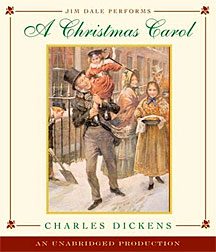 The first is an audio version of the book, performed by Jim Dale. Dale, who is well known for his inspired reading of the Harry Potter series, is a master reader. His interpretation of Dickens brings the story to life. One of my favorite ways of “reading” A Christmas Carol is by listening to Jim Dale.
The first is an audio version of the book, performed by Jim Dale. Dale, who is well known for his inspired reading of the Harry Potter series, is a master reader. His interpretation of Dickens brings the story to life. One of my favorite ways of “reading” A Christmas Carol is by listening to Jim Dale.
The second resource is a book that will help you understand every last word in A Christmas Carol. The Annotated Christmas Carol includes a marvelous introduction and commentary by Michael Patrick Hearn, a distinguished literary scholar. Now you can appreciate the nuances and historical connections Dickens incorporated into the book.


